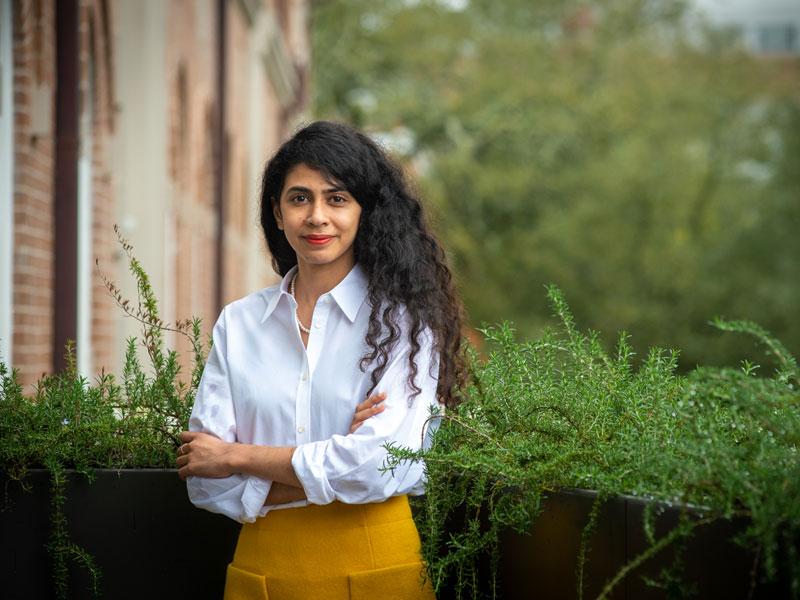The economics of a pandemic
When COVID-19 sent countries into a global lockdown last year, Engy Ziedan, PhD, assistant professor of economics at the School of Liberal Arts, suspected she would measure the economic fallout.
Within weeks she and other economists used social media to form research groups to examine different aspects of the pandemic, using electronic medical records, insurance claims and prescription drug records, among other sources. Since then, Ziedan has worked on several different projects that use economics as a lens to view the pandemic from multiple angles.
She was part of a team that determined that school reopening had no effect on hospitalizations in areas where COVID-19 spread was not high. She is also involved with other studies examining COVID-19’s effects on opioid use, child development and women in the workforce, among others.
The school study has been the highest profile study for her yet. “It's been incredible,” she said. “We got featured on NPR, we were in The New York Times (and) we got an email from the CDC saying that they're preparing a scientific report using the evidence from our study.”
Ziedan said she felt a responsibility to produce these studies: “The reality was, you do COVID-19 work, you respond to the moment and you have to be innovative with data sources. There’s a significant public health crisis unfolding, people are dying, and you just can't look away,” she said.
The consortium of economists with which she works even partnered with The COVID-19 Research Database, “a pro-bono, cross-industry collaborative, composed of institutions donating technology services, healthcare expertise and de-identified data,” which itself was developed by several large firms in partnership with academics, and which include mortality and consumer data.
Another important publication Ziedan has worked on looks at the effects of COVID-19 closures on non-COVID-19 health care – doctor's appointments that were deferred or delayed while Americans stayed home in 2020.
“It's actually really interesting, and probably the most valuable piece of work that's going to come out of the pandemic, for me, in terms of health services, research work,” Ziedan said, noting that the United States spends about 20 cents of every dollar on health care. But the average American doesn’t spend 20% of their income on health care; rather, “It's more that 5% of the population represents like 50% of the spending,” she said.
“The next question is, why does it cost so much of our GDP to heal and treat 5% of the population? Is it because they're really sick? Or is it because we're inefficient and unproductive? And the inefficient and unproductive part has been really hard to get at, empirically. So the pandemic presented an opportunity: Millions of Americans are going to miss doctor's appointments and millions of Americans were going to miss surgeries and procedures, and we were about to find out what's going to happen to those who missed those procedures. Basically, it's an indirect calculation of what care is valuable, and what care can you miss out on, and absolutely nothing happens to you.”
At Tulane, Ziedan teaches a course in Health Economics and Pandemics, which has doubled in size since the fall semester. It’s a unique experience for students to study pandemic economics while actually living through one.
“We show them data and how to program with data on the pandemic. And that, I think, is the part that they're most excited about — that they can receive a national data set with millions of observations and then tell a story.”

